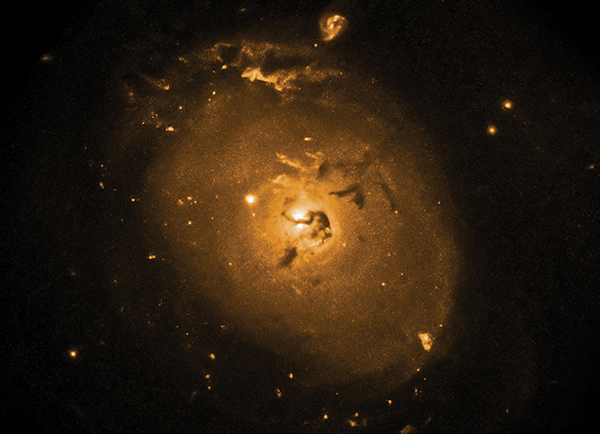
The secrets to some of the universe’s biggest mysteries, Sera Cremonini believes, may very well lie in the behavior of its tiniest constituents.
Cremonini, assistant professor of physics, probes these questions through the lens of string theory, which proposes that every particle in the universe is made of tiny, vibrating strings of energy. Strings are one-dimensional objects, possessing length but not width. They can be open ended, form a closed loop or attach to membranes, or branes, which could be tiny or could fill the entire universe. Like guitar strings tuned to produce different frequencies, the vibrations of strings can be associated with the various particles we are familiar with. One of these corresponds to the graviton, the particle that is believed to carry the gravitational force. The way in which strings and membranes arrange themselves and interact with each other gives rise to the properties of the subatomic particles we observe.
“The idea behind string theory is simple,” says Cremonini. “Look deep inside any particle and you’ll see this tiny vibrating string. This is the fundamental unit we have been searching for, the fundamental entity that makes up everything.”
String theory, says Cremonini, is, to date, the best framework devised to bridge the two incompatible theories that describe how the universe works. Albert Einstein’s general theory of relativity teaches that gravity is the bending of space and time; it is deterministic and describes large-scale phenomena. Quantum mechanics is probabilistic; it governs the behavior of atomic and subatomic particles.
In a project funded by the National Science Foundation, Cremonini studies the microstructure of space-time, the four-dimensional continuum into which the three physical dimensions are woven with time. Using holography, she hopes to shed light on phenomena ranging from the immediate aftermath of the Big Bang to the structure and properties of black holes to the behavior of unconventional materials like high-temperature superconductors. The goal of Cremonini’s current research is to expand the scope of problems to which holographic techniques can be effectively applied.
“Holographic techniques were originally developed for simple systems that are well behaved, have a lot of symmetry and are not too realistic,” she says. “We’ve found that these techniques are much broader and quite powerful. I’m asking how much we can extend and generalize these ideas to more complex systems with less symmetry, which are closer to our universe and, therefore, more realistic.”
In her NSF project, Cremonini is seeking to use holographic techniques to study quantum phases of matter whose behavior is poorly understood, precisely because of such strong interactions. An example is that of high-temperature superconductors, which achieve superconductivity at temperatures as high as -70 degrees Celsius, compared to the -240-degree threshold for ordinary metallic superconducting materials.
Because they have strongly interacting constituents, says Cremonini, high-temperature superconductors are much more challenging to model than regular superconductors.
“High-temperature superconductors are very interesting materials, but there’s no deep understanding of why they superconduct,” she says. “The behavior of the constituents of those materials is very strange. Their electrons are so entangled and interact so strongly that we can’t really understand their behavior using the techniques we would normally use for regular superconductors or conventional metals. Holographic techniques give us a way to write tractable calculations that make it possible to model these systems and their unusual properties.”
Cremonini is also exploring how gravity emerges from microscopic, quantum-mechanical constituents. She hopes her answers will shed light on the structure of space-time, the beginning and early evolution of the universe, and the physics of black holes.
“String theory has given us a lot of insights into the relationship between general relativity and quantum mechanics, especially in the last 20 years,” she says. “One of the great successes of string theory is that it has given us a way to calculate the microscopic bits that make up certain black holes, and it has reproduced their entropy very precisely. This is remarkable, and it is a must for any theory of quantum gravity.
“Maybe there is another theory that can describe all of these phenomena,” Cremonini adds. “That’s possible, but so far, string theory is the best framework we have.”
































